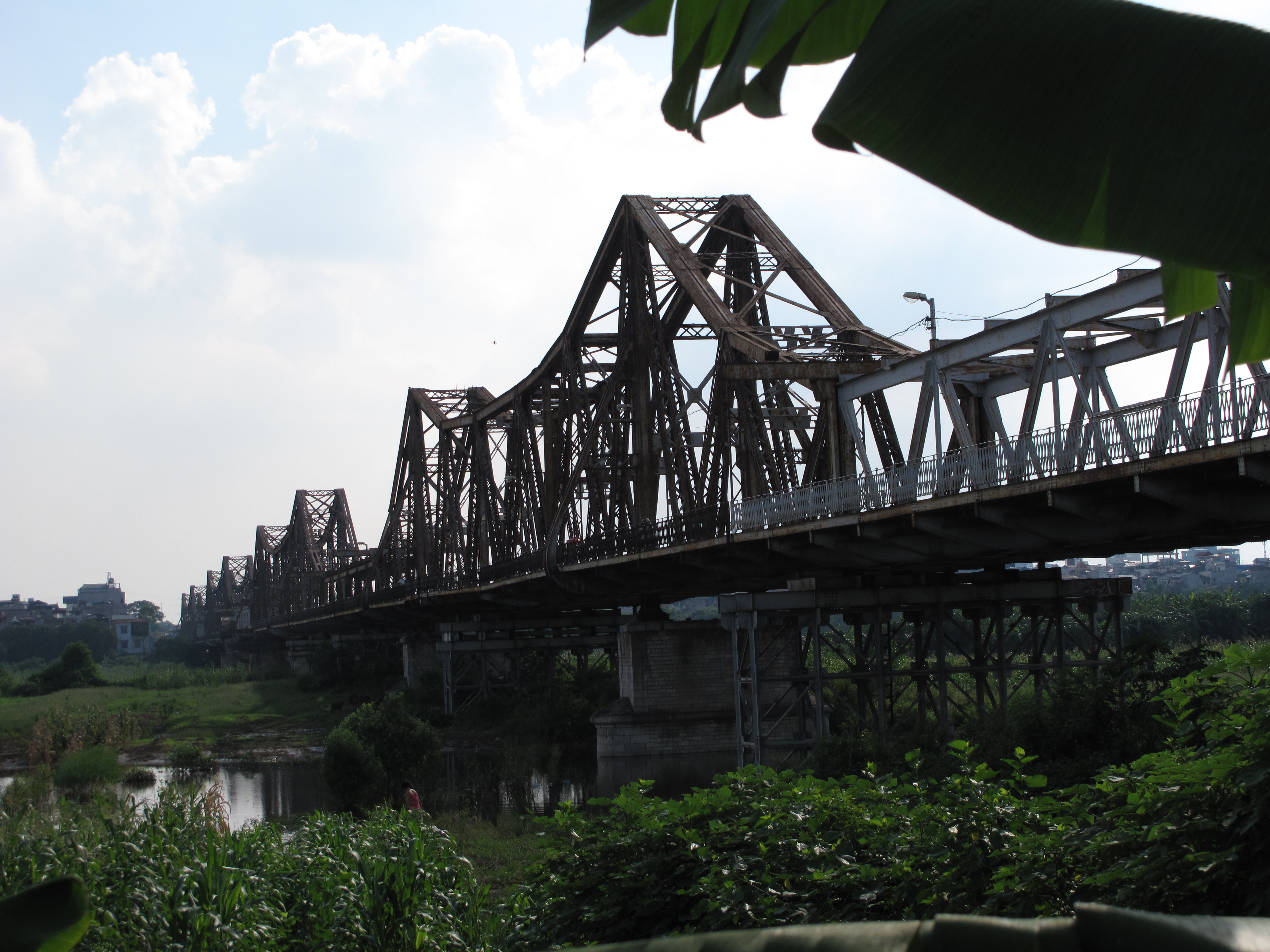Long Biên Bridge on:
[Wikipedia]
[Google]
[Amazon]
 Long Biên Bridge () is a historic
Long Biên Bridge () is a historic
by Petroc Trelawny, BBC News Magazine, 18 August 2013. Retrieved 18 August 2013. Before North Vietnam's independence in 1954, it was called ''Paul-Doumer Bridge'', named after Paul Doumer – the governor-general of French Indochina and then French president. At in length, it was, at that time, one of the longest bridges in Asia. For the French colonial government, the construction was of strategic importance in securing control of northern Vietnam. From 1899 to 1902, more than 3,000 Vietnamese took part in the construction.
File:Cầu Long Biên.jpg, The pedestrian and two-wheeled vehicles pathway
File:Long Bien Bridge 3796900232 1922457f90.jpg, The bridge's iron beams
File:HanoiLongBienBridge.jpg, The bridge in 1915
Image:Long_bien_bridge.jpg, Long Biên Bridge as seen from the Red River
 Long Biên Bridge () is a historic
Long Biên Bridge () is a historic cantilever bridge
A cantilever bridge is a bridge built using structures that project horizontally into space, supported on only one end (called cantilevers). For small footbridges, the cantilevers may be simple beam (structure), beams; however, large cantilever ...
across the Red River that connects two districts, Hoàn Kiếm and Long Biên of the city of Hanoi
Hanoi ( ; ; ) is the Capital city, capital and List of cities in Vietnam, second-most populous city of Vietnam. The name "Hanoi" translates to "inside the river" (Hanoi is bordered by the Red River (Asia), Red and Black River (Asia), Black Riv ...
, Vietnam
Vietnam, officially the Socialist Republic of Vietnam (SRV), is a country at the eastern edge of mainland Southeast Asia, with an area of about and a population of over 100 million, making it the world's List of countries and depende ...
. It was originally called ''Paul Doumer Bridge''.History
During French regime
The bridge was built in 1899–1902 by the architects Daydé & Pillé of Paris, and opened in 1903.Long Bien: Historic Hanoi bridge with an uncertain futureby Petroc Trelawny, BBC News Magazine, 18 August 2013. Retrieved 18 August 2013. Before North Vietnam's independence in 1954, it was called ''Paul-Doumer Bridge'', named after Paul Doumer – the governor-general of French Indochina and then French president. At in length, it was, at that time, one of the longest bridges in Asia. For the French colonial government, the construction was of strategic importance in securing control of northern Vietnam. From 1899 to 1902, more than 3,000 Vietnamese took part in the construction.
Vietnam War
It was heavily bombed duringVietnam War
The Vietnam War (1 November 1955 – 30 April 1975) was an armed conflict in Vietnam, Laos, and Cambodia fought between North Vietnam (Democratic Republic of Vietnam) and South Vietnam (Republic of Vietnam) and their allies. North Vietnam w ...
due to its critical position (the only bridge at that time across the Red River connecting Hanoi to the main port of Haiphong
Haiphong or Hai Phong (, ) is the third-largest city in Vietnam and is the principal port city of the Red River Delta. The municipality has an area of , consisting of 8 urban districts, 6 rural districts and 1 municipal city (sub-city). Two o ...
). The first attack took place in 1967, and the center span of the bridge was felled by an attack by 20 United States Air Force
The United States Air Force (USAF) is the Air force, air service branch of the United States Department of Defense. It is one of the six United States Armed Forces and one of the eight uniformed services of the United States. Tracing its ori ...
(USAF) F-105 fighter-bombers on 11 August. CIA reports noted that the severing of the bridge did not appear to have caused as much disruption as had been expected. During the war, many anti- aircraft artillery were placed on the top of the bridge in order to protect it against attack.
On 10 May 1972 the bridge was attacked in the first Operation Linebacker attacks in response to the North Vietnamese Easter Offensive
The Easter Offensive, also known as the 1972 spring–summer offensive (') by North Vietnam, or the Red Fiery Summer (') as romanticized in South Vietnamese literature, was a military campaign conducted by the People's Army of Vietnam (PAVN, t ...
. On 13 May the USAF announced that several spans of the bridge had been destroyed by laser-guided bomb
A laser-guided bomb (LGB) is a guided bomb that uses semi-active laser guidance to strike a designated target with greater accuracy than an unguided bomb. First developed by the United States during the Vietnam War, laser-guided bombs quickly pro ...
s (LGB). On 9 August the USAF announced that another LGB attack had disabled the newly repaired bridge. On 11 September the USAF attacked the bridge again as repairs were nearing completion.
Modern day
Some parts of the original structure remain intact, while large sections have been built later to repair the holes. Only half the bridge retains its original shape. A project with support and loan from the French government is currently in progress to restore the bridge to its original appearance. Today trains, mopeds, bicycles and pedestrians use the dilapidated bridge, while all other traffic is diverted to the nearby Chương Dương Bridge and some other bridges: Thanh Trì Bridge, Thăng Long Bridge, Vĩnh Tuy Bridge, and Nhật Tân Bridge. Under the bridge, poor families live in boats on the Red River, coming from many rural areas of Vietnam.Image gallery
References
{{DEFAULTSORT:Long Bien Bridge Hong River Hồng Hà, Hanoi Long Biên Bridges in Hanoi Bridges completed in 1903 Cantilever bridges Railway bridges in Vietnam Steel bridges 1903 establishments in Vietnam